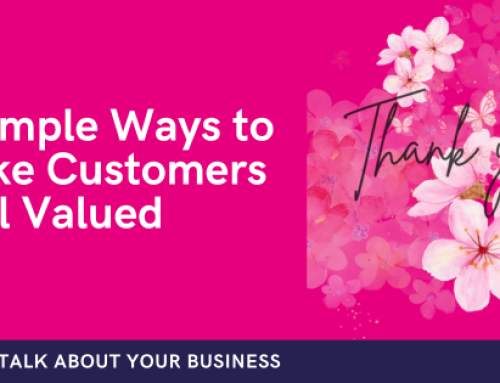Content marketing isn’t something that businesses of all sizes pursue for the sake of it. It’s a purpose-driven tactic with specific outcomes to achieve — typically seeking to raise a brand’s profile, bring attention to products and services, and ultimately yield conversions. Accordingly, it isn’t enough to make a half-hearted effort to push content. You need a comprehensive strategy.
The most challenging part of the entire process is bringing in relevant leads, because it concerns the challenging step of moving from providing value to requesting action. The more broadly and creatively you can approach it, the more likely you’ll be to establish a steady and diverse stream of valuable leads.
To give you some assistance in that area, let’s look at 6 must-try lead-generation tactics that every ambitious content marketer should consider adding to their arsenal:
Collaborating with influencers
Influencer marketing is huge now, but a lot of it involves paying people to talk about your products or services — effective, perhaps, but also expensive. What I recommend trying instead of collaborating with influencers with relevant followings: working with them to produce content you can both benefit from.
For example, if you were trying to market a cleaning product, you could find an influencer with a following all about home improvement and work with them to come up with an idea that could get some traction — perhaps a 30-minute cleaning challenge they could try. You’d provide the cleaning product, and they’d spend the time talking about efficient ways to clean a house (and include a plug for your product, of course, along with a discount code).
You’d work on the content together, ensuring that it suited both brands, and you’d both come away with viable social media content. Your followers would learn about them, and their followers would learn about you, making for a simple win-win situation. You can use manual searches to find suitable influencers, or use a tool (something like Awario will do the trick).
Releasing podcasts
Podcasts are enormously popular today: they can be consumed almost anywhere, often while getting work done, making them perfect for commuters, gym-goers, and office workers. The reason that podcasts are viable lead-generation tools is that they tend to bypass a lot of conventional online skepticism — hearing someone’s voice is a powerful thing.
Regardless of what type of podcast you want to release (it could be entertaining, educational, motivational… it’s up to you), you can bracket it with calls to action. Start with a mention of whatever you’re trying to promote, then include another one towards the end of the episode: the first will catch the most people (listeners drop off as episodes go on), but the second will catch the most invested people.
Be mindful of how you push someone to your target page, because reading out a URL is clunky and ineffective. If you must mention a link, use something short and readable: I suggest using TinyURL with a custom alias to create something that actually fits the context. Mainly, though, include the link in the description of your podcast episode — that way, you can simply tell the listener to check the description for the link.
Running contests
Contests generally play extremely well online, particularly in the social media space, because they get easy attention and readily inspire action — who wouldn’t like or retweet a post if it meant being added to a prize draw? Of course, you don’t have to stop there. It really depends on what you’re offering: if it’s very tempting, you can provide a full-length form to fill in.
Think about what you can offer that would seem worthwhile. If you’re running an ecommerce business, one option that I strongly suggest trying is giving away a product to one lucky winner but also giving a number of secondary winners reasonable discounts and then giving everyone participating a small discount.
Why is this effective? Because the main prize offers the lure of something free, the secondary prize gets people excited about the idea of paying for the product (just less), and the tertiary prize gives everyone hyped about the product the chance to still get a discount (however small).
If you’re going to offer a discount through social media, though, make it as easy as possible to redeem — if you can allow customers to make their purchases without having to leave social media, so much the better. Using a platform capable of automatic discounting and seamless social selling (such as Shopify’s Plus tier) will give you a huge advantage.
Writing guides
Most people use the internet for tuition of some kind. It’s packed with resources, so we might as well use them — and by adding to those resources, you can spur people to view your brand more favorably. Think about what questions your followers and prospective customers might like answered, and create content to address them.
An excellent tool for this is search utility Answer the Public: put in your primary keywords, and you’ll get a wide range of questions people ask about it. Pick out the most significant ones and use them to frame your guide (to save time, make them your subheadings).
If your guide seems suitably valuable, you can easily use it to generate leads through requiring an email address or even the creation of a store account (if you have a store, that is). You can also share snippets through social media to drum up interest and make people aware that you’re producing that type of content.
Offering free consultations
Yes, as noted, the word “free” holds a lot of power, and you can use that to draw people in through offering free consultations suiting your business model. The value proposition would be simple and compelling: anyone who needs some advice in your field can simply ask you and get some expert advice at no cost to them.
How would this work for generating leads? Very simply, every moment someone spends on your website or talking to you directly is an opportunity for you to win their business — and the more useful your advice proves, the more they’ll recognise your authority and come to believe that you’re genuinely trustworthy.
Since people prefer to work with businesses they find authentic, this is a massive point in your favor. And because they’ll feel mildly indebted to you for that initial consultation, they’ll be less likely to slink away when you offer them a paid service (or product).
Hosting webinars
Hosting in-person events is enormously useful, but a much cheaper tactic is to host webinars. Webinars are highly convenient for spending time with other people in your industry, learning about the latest developments and generally getting to network — and since they’re attended virtually, there’s very little reason not to attend them from time to time.
If you start hosting your own webinars (you can even base them on your guides and podcasts), you can ask people to submit their email addresses to be allowed to join them. And while you’re running your webinar, you can find creative ways to engage in promotion while you provide value for the attendees.
For example, you can use your own software in the presentation, use your own company as a case study, or talk about one of your products as an example. Along the way, you can provide context about your company, ensuring that everyone will leave with a stronger idea of what you do and what makes you notable. Provide a list of links at the end, and make sure that they have the opportunity to take the action (or actions) you’re hoping for.
There are countless more ways in which you can generate leads with content, so don’t stop with these — but if you’re looking for ways to revitalise your content marketing campaign and bring in more sales, you can certainly start with them. Go with whatever fits with your overall business style, and keep going until you get results.






